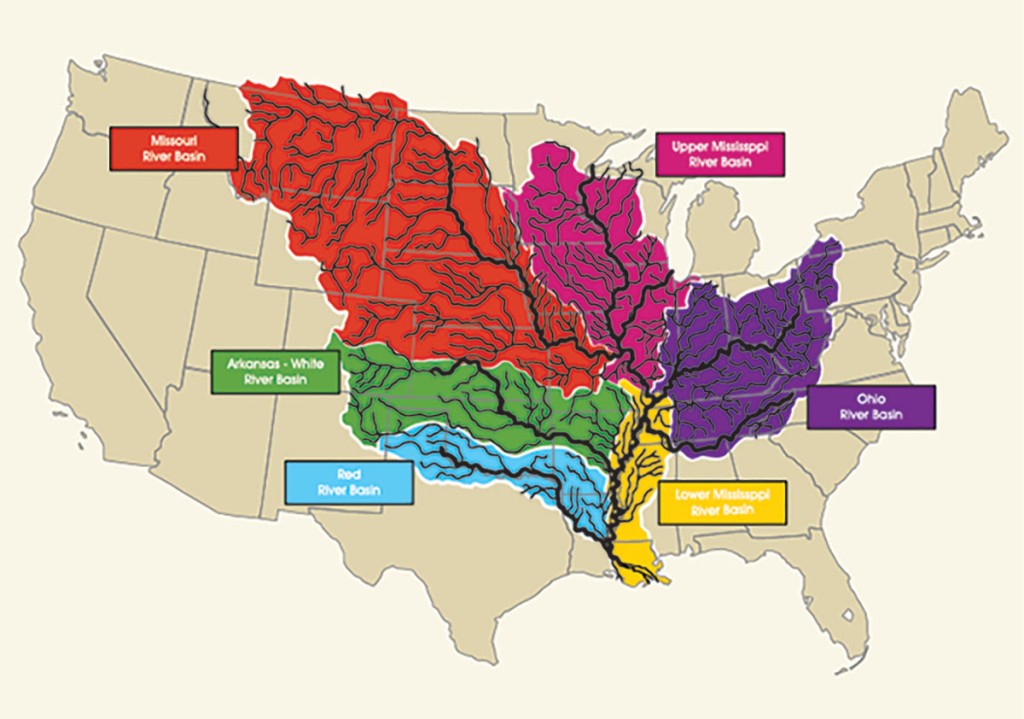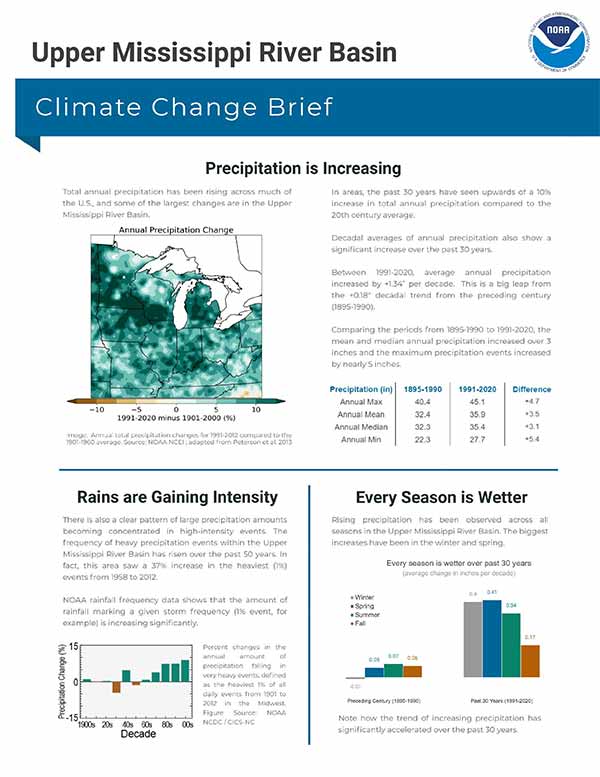SOUNDING THE ALARM
A Summary of the Problems
U.S. Army Corps of Engineers (USACE) Mississippi River flood control is hurting the Mississippi Sound Estuary.
USACE releases river water through its network of spillways to prevent flooding in New Orleans and other areas. Mississippi Sound Coalition supports this flood prevention wholeheartedly. Floods happen when extreme rains and melting snow run off into the rivers and tributaries from 31 states that feed into the Mississippi River. The Bonnet Carré Spillway, built between 1929 and 1931, is about 12 miles upriver from New Orleans.
How Does this Flooding Hurt the Mississippi Sound?
1.) SALTLESS WATER:
When there is flooding, saltless water released through the Bonnet Carré spillway goes into Lake Ponchartrain, through Lake Borgne, and into the Mississippi Sound, diluting the natural salt balance. Saltless river water also flows from other rivers in the Sound, but the Mississippi River is far and away the largest contributor. In 2019, the U.S. Army Corps of Engineers released over 10 trillion gallons from Bonnet Carré into Lake Ponchartrain and beyond.
NOAA (the National Oceanographic and Atmospheric Administration) predicts that rainfall in the Mississippi River Basin will increase for the rest of the 21st Century.
2.) POLLUTANTS EMPTYING INTO THE SOUND:
This saltless water also contains pollutants from animal waste and runoff including fertilizers, pesticides, antibiotics, and other chemicals that drain into the rivers.
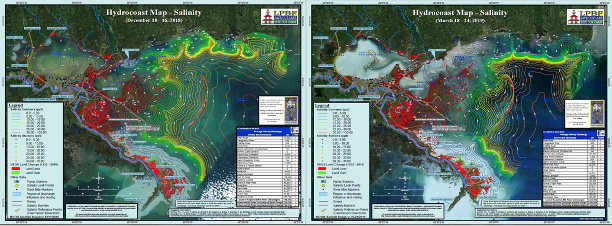
In 2019, the U.S. Army Corps of Engineers opened Bonnet Carré spillway twice to control flooding. Those openings lasted for a record 123 days, spilling about 1.35 trillion cubic feet (10 trillion gallons) of polluted river water into Lake Ponchartrain, then traveling eastward into Lake Borgne and the Mississippi Sound.
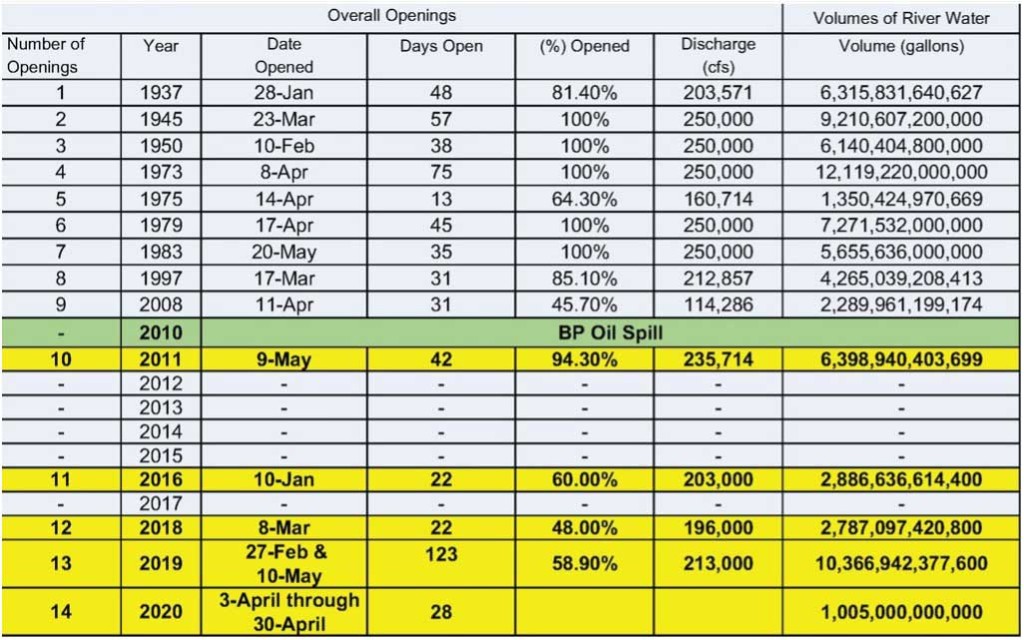
More Projects Adverse to Our Sound Are in the Works
Mid-Breton Sediment Diversion
The planned Mid-Breton Sediment Diversion project south of New Orleans poses an even bigger threat. The project aims to divert Mississippi River water carrying sediment eastward into Breton Sound, but this water will also reach the Mississippi Sound. For more information, please refer to the Mid-Breton Sediment Diversion (MBrSD) Assessment – Final Report from the University of Southern Mississippi.
The purpose is to rebuild Louisiana marshes, but it will also damage the Mississippi Sound. The Coalition supports the goal of rebuilding Louisiana Marshes, but not through the method proposed by the Coastal Protection and Restoration Authority (CPRA) which would harm the Mississippi Sound. Dredge spoils would be a better solution.
Mississippi Sound Coalition is following these projects and will take actions to mitigate harmful impacts on the Mississippi Sound.
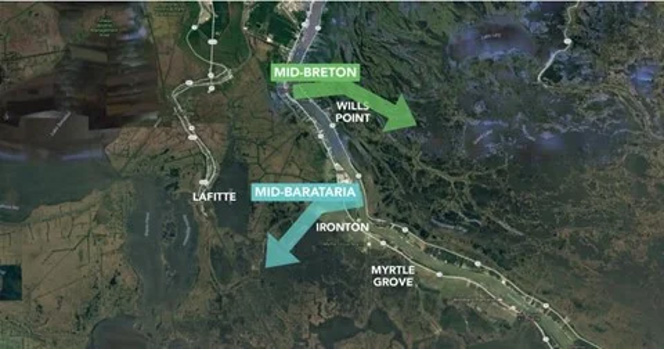
Mid Breton and Mid Barateria Sediment Diversions. Source: Restore the Mississippi River Delta https://mississippiriverdelta.org/project/mid-breton-sediment-diversion/
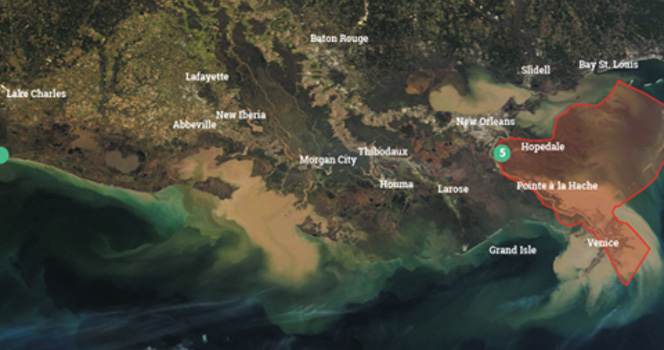
In red: Mid Breton Diversion influence area. Source Restore the Mississippi River Delta https://mississippiriverdelta.org/project/mid-breton-sediment-diversion/
